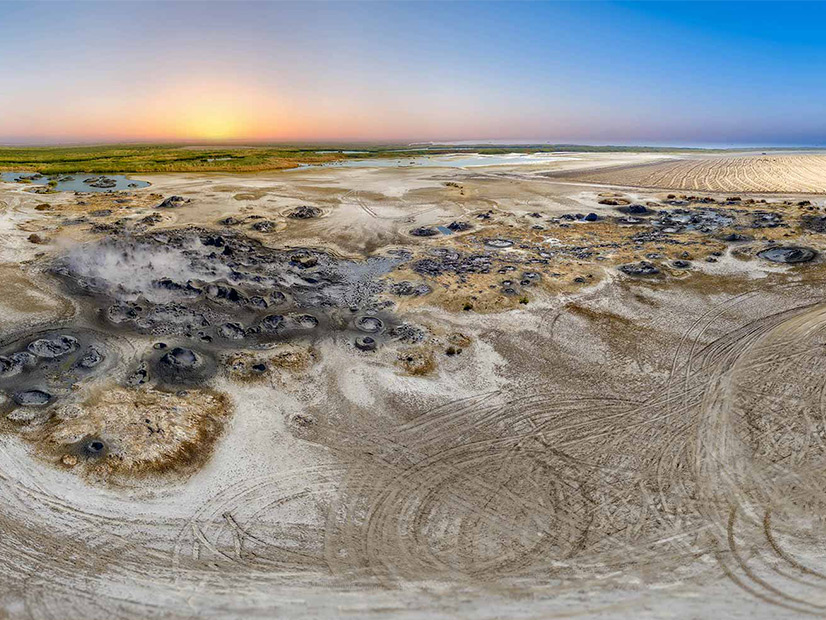General Motors (NYSE: GM) will invest millions of dollars in Controlled Thermal Resources’ lithium production project at the Salton Sea in Southern California, the automaker said Friday.
The investment will give GM first rights to lithium produced in the first stage of CTR’s Hell’s Kitchen lithium and power project. The project involves extracting lithium from geothermal brine.
CTR expects to start delivering lithium from its Hell’s Kitchen project starting in 2024.
The collaboration will give GM a U.S.-based source of lithium as the company accelerates its rollout of electric vehicles. Lithium is a key material used in EV batteries, but most lithium used in lithium-ion batteries is mined and processed outside the U.S.
The lithium from Controlled Thermal Resources will be produced with a “near zero” carbon footprint, CTR said. The extraction process uses renewable power and steam, and the geothermal brine is returned to the deep geothermal reservoir when the process is finished.
“GM has shown great initiative and a real forward-thinking strategy by securing and localizing a lithium supply chain while also considering the most effective methods to minimize environmental impacts,” Rod Colwell, CTR’s chief executive officer, said in a news release.
GM described its investment as the first multi-million-dollar investment in CTR’s Hell’s Kitchen project. A GM spokesman declined to say the exact amount of the investment. The deal includes an option for a multi-year partnership. It does not make GM a shareholder in CTR, the spokesman said.
“By securing and localizing the lithium supply chain in the U.S., we’re helping ensure our ability to make powerful, affordable, high-mileage EVs while also helping to mitigate environmental impact and bring more low-cost lithium to the market as a whole,” Doug Parks, GM executive vice president for global product development, purchasing and supply chain, said in a news release.
Geothermal, Lithium Resources
The Salton Sea Geothermal Field in California’s Imperial County is described as the largest known geothermal resource in the world. The Salton Sea is also a rich source of lithium, with the potential to satisfy 40% of global demand for the element, according to some estimates.
In addition to CTR, other companies are taking an interest in the area’s resources, including Berkshire Hathaway Energy. (See California Lithium Extraction Plans Advance.)
Some officials envision the area becoming a “Lithium Valley,” playing a central role in the U.S. domestic lithium supply chain.
California Assemblyman Eduardo Garcia (D), whose district includes Imperial County, described the agreement between CTR and GM as “the first major investment in actualizing that vision.”
“After years of laying the groundwork, we are ready to move forward — pedal-to-the-metal — on our cleaner air, electric vehicle, and climate goals while utilizing these economic development opportunities to bring vital resources, improve public health and uplift overall circumstances in our region,” Garcia said in a news release.
Garcia is chairman of the Assembly Select Committee on California’s Lithium Economy.
He also sponsored Assembly Bill 1657, enacted last year, which established the Blue-Ribbon Commission on Lithium Extraction in California. The 14-member panel, commonly known as the Lithium Valley Commission, began meeting in February.
EV Acceleration
The collaboration between GM and CTR follows GM’s announcement last month that it is boosting its investment in EVs and autonomous vehicles to $35 billion from 2020 through 2025. The investment is an increase from the $20 billion the company committed in March 2020 for electric and autonomous vehicles over the same time period.
With the added investment, GM will include new electric commercial trucks in its plans for North America. In November, the company said it would deliver 30 new EVs by 2025 globally, with 20 of those available in North America.
GM has two Ultium battery-cell manufacturing plants under construction in Ohio and Tennessee and plans to build two more battery-cell plants in the U.S. by mid-decade.
Also last month, GM announced an agreement to supply its Ultium batteries, as well as its Hydrotec fuel cells, to Wabtec Corp., which is developing the world’s first completely battery-powered locomotive.



